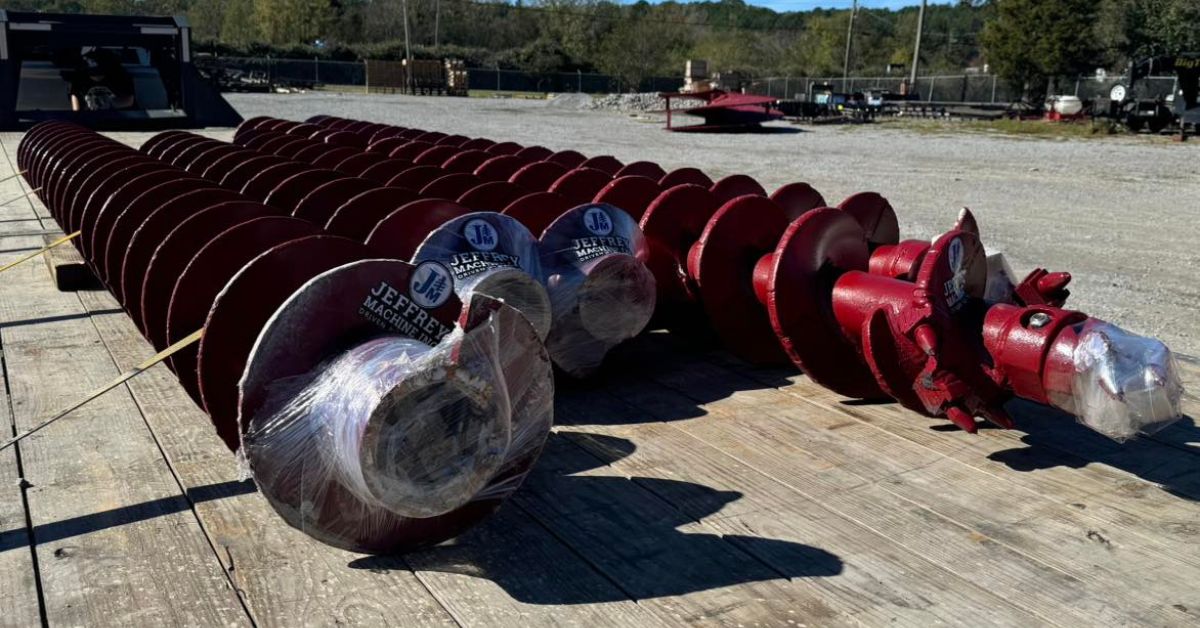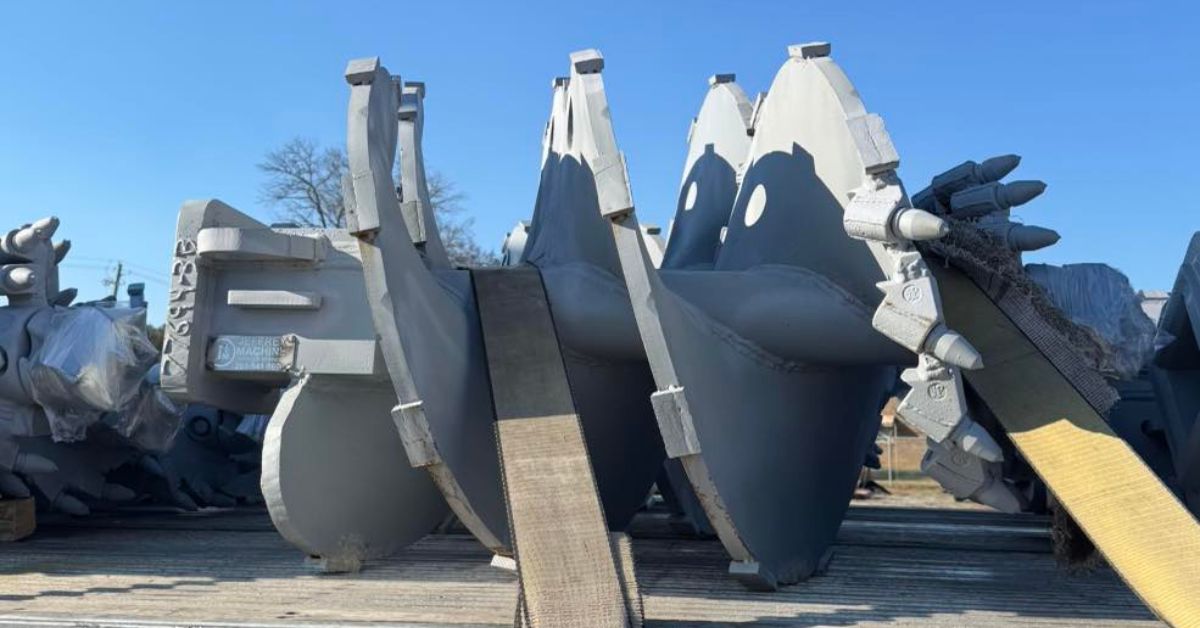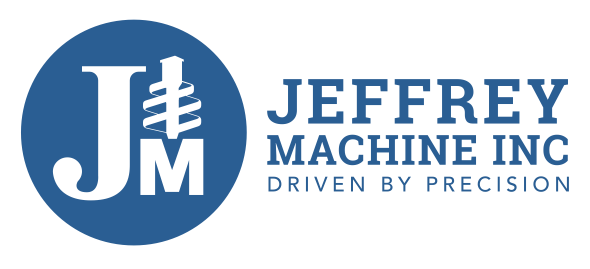CFA Piling vs. FDP Systems: A Complete Explanation

Foundations are the backbone of any construction project. Therefore, the piling technique you choose will affect the foundation’s structural stability, the project’s efficiency, and expenses.
Among the most common methods, continuous flight auger (CFA) piling and full displacement pile (FDP) systems stand out. While their objectives are similar, these two approaches differ in their applications, techniques, and suitability for various construction scenarios. Learn the differences between CFA and FDP piling for a complete explanation of their applications in construction projects.
CFA Piling
CFA piling is a fast and versatile piling method for construction. The technique involves drilling a hollow auger into the soil to the required depth while ensuring the auger flights remain full of material during the process. After reaching the desired depth, the user pumps concrete through the hollow stem while withdrawing the auger. This creates a continuous pile without filling the void, reducing the risk of the soil collapsing.
CFA piling is widely used for soft to stiff clays, silts, and sands. This method eliminates the need for casing. It also results in minimal noise and vibration, making it an ideal solution for urban environments or areas with noise and vibration restrictions.
One of the standout advantages of CFA piling is its sheer speed; it can install multiple piles in a single day to shorten project timelines and reduce overhead costs. However, its effectiveness decreases in very dense soils or when boulders are present because the auger may face resistance. Therefore, continuous monitoring is necessary during installation to avoid collapsing piles or excessive concrete usage.
FDP Systems
FDP is a new, innovative technique in the construction world. It involves inserting a specially designed displacement tool into the ground without removing any soil. The method relies on displacing the surrounding soil laterally as the tool advances. After achieving the required depth, the tool pours concrete or grout through the displacement tool while withdrawing the substance to form a pile.
What makes an FDP system different is its capacity to maintain soil structure while achieving the desired load-bearing capacity. It’s particularly advantageous in granular soils, where the lateral displacement of soil can actually improve the soil’s density and load-bearing performance.
The technique is also appreciated for its environmental benefits, as it minimizes spoilage generation and reduces waste handling costs. Like CFA piling, the FDP method generates minimal noise and vibration, making it a viable option for urban and environmentally sensitive areas. However, the FDP approach requires specialized equipment and expertise, which may raise initial upfront costs. Furthermore, if the project deals with cohesive or rocky soils that might impede displacement, FDPs might struggle to complete the task.

Key Differences Between CFA Piling and FDP Systems
While CFA piling and FDP systems share several characteristics, their fundamental differences lie in the drilling and soil interaction process. CFA piling removes soil to create a void that is subsequently filled with concrete. On the other hand, the FDP system displaces soil laterally rather than extracting it, which enhances the surrounding soil’s load-bearing properties.
CFA piling is ideal for a wide range of soil types, including cohesive and non-cohesive soils, making it a versatile solution for many projects. Conversely, the FDP approach thrives in granular soils where the displacement process contributes positively to soil compaction and stability.
Additionally, CFA piling is cost-effective due to its simplicity and broad application. An FDP system typically entails higher initial investments in specialized equipment.
A factor that construction professionals must carefully assess is the environmental impact and regulatory compliance of each method. FDP has minimal spoil generation, tends to be more environmentally friendly, and typically aligns with regulations aimed at reducing construction waste. CFA piling is convenient, but it can result in spoil that requires disposal, adding a layer of logistical complexity and fewer eco-friendly features.
Project Applications
CFA piling has long been a favorite for medium- to large-scale construction projects due to its versatility. Foundations for commercial buildings, retaining walls, and bridge abutments are all common applications of CFA piles. Construction professionals turn to this technique for sites with restricted working spaces because CFA rigs are relatively compact and maneuverable compared to other piling equipment.
FDPs, while newer, have extreme value in projects requiring soil densification, such as those involving high-rise buildings or heavily loaded industrial structures. Furthermore, it provides advantages in environmentally sensitive areas, such as prioritizing spoil management or producing minimal vibration during construction.
Overcoming Various Piling Challenges
Both piling methods present unique challenges that construction managers must consider. CFA piles, for instance, require precise calibration of auger withdrawal speed and concrete flow to prevent defects such as voids or bulging. Additionally, the spoil generated must be disposed of effectively, which is why monitoring systems and skilled personnel play a crucial role in overcoming these challenges.
On the other hand, the FDP approach heavily relies on specialized equipment and technical expertise, which can result in high upfront capital costs. Before starting construction, conduct site-specific investigations to determine whether the soil conditions are suitable for displacement rather than extraction.
Jeffrey Machine offers top-of-the-line custom auger flighting to accomplish even the most daunting projects. Each order is carefully crafted and fully customized to meet the specific needs of your project, ensuring quality and precision every time.

The Role of Innovation in Piling Technology
The construction industry is evolving rapidly, and technological advancements shape every aspect of the sector, including piling. Both CFA and FDP methods continue to benefit from emerging technologies, such as real-time monitoring systems, which enhance the accuracy and reliability of pile installation processes. Data analytics tools are increasingly aiding construction professionals in determining the most efficient and cost-effective piling method for their specific projects.
Automation and robotics are also making inroads in piling technology. Automated CFA rigs with advanced monitoring capabilities and AI-driven algorithms help operators achieve greater precision and efficiency. Similarly, there are additional displacement improvements in FDP equipment that boast adaptable systems for more challenging soil conditions.
Paving the Way Forward
Construction projects demand precise planning and execution, and the choice of piling technique can significantly impact both short-term and long-term outcomes. By understanding the intricacies of CFA piling and FDP systems with this complete explanation of their uses, construction professionals can make informed decisions that align with the project’s specifications.
For expert guidance in selecting the right piling method or exploring customized piling solutions for your project, connect with the team today at Jeffrey Machine. Together, we can build foundations that stand the test of time.
